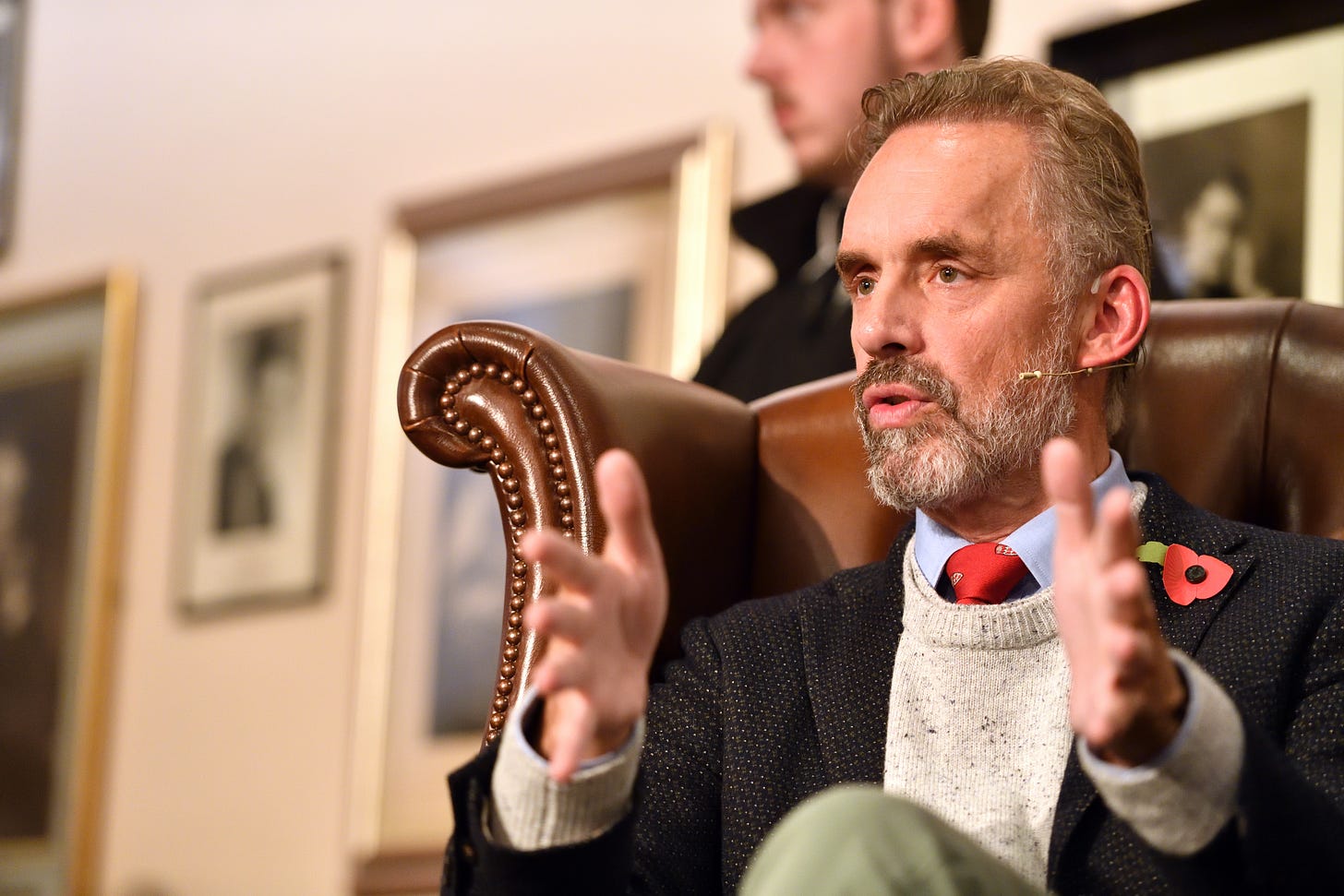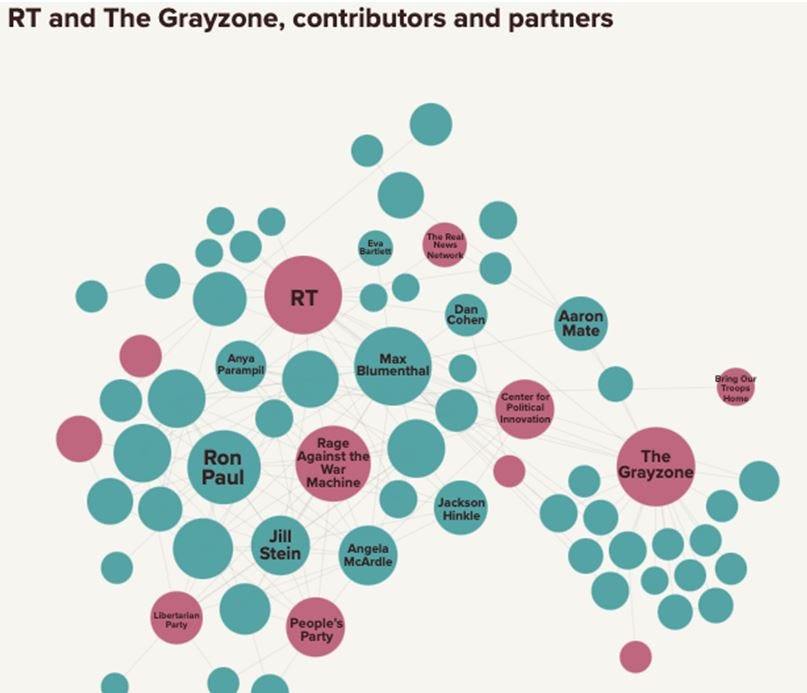No, There Isn’t a Ukraine ‘Enemies List’
As much as it might make Ukraine critics feel special to think so.

THE LATEST OUTRAGE CYCLE ON THE RIGHT is over a so-called “enemies list” of anti-Ukraine Americans that has come to light in the last few days. David Sacks, the tech entrepreneur turned Ukraine-war doomsayer, hinted that the list—on which he appears—might be an actual kill list. Another listee, Compact magazine cofounder Sohrab Ahmari, called the list “ominous” and “creepy,” a manifestation of “Ukraine McCarthyism.” A Fox News headline says that a “Biden-linked Ukraine group” is behind the list. Sen. J.D. Vance of Ohio and Rep. Matt Gaetz of Florida, two of the many Republican politicians on the list, have written to Secretary of State Antony Blinken demanding answers about possible connections between the list’s creators and the State Department.
A closer look shows that the outcry—started by MAGA whackjob extraordinaire Laura Loomer, and involving no small measure of self-aggrandizement by many of the list’s targets—is hugely overblown. The “enemies list” is not really an enemies list so much as an appendix to a report discussing the anti-Ukraine ecosystem in American politics, punditry and activism. The report is not from the Ukrainian government or any official entity; it was posted on a Ukrainian digital journalism site, Texty.org.ua, and there’s also no evidence so far that Texty is getting any U.S. government funding.
The claim that Texty is “Biden-linked” seems to be based entirely on the fact that (1) its founder, Ukrainian data journalist Anatoly Bondarenko, has been a sometime instructor for TechCamps, a “public diplomacy” program at the State Department’s Bureau of Educational and Cultural Affairs which provides training for foreign journalists and activists, and (2) Texty is listed as one of the partners in the Transparency and Accountability in Public Administration and Services project run by the U.S. Agency for International Development. From this, Ahmari leaps to the bold conclusion that “it certainly seems plausible that Russia hawks inside the US government would use a foreign NGO to hit their domestic opponents.”
If Texty were indeed receiving grants from a U.S. government program, it could be running afoul of funding regulations by ostensibly attempting to influence American politics and policies. But even that aside, the framing of its report—titled “Roller Coaster: From Trumpists to Communists. The forces in the U.S. impeding aid to Ukraine and how they do it”—contains some blunders that easily lend themselves to hysteria about “enemies’ lists.” The result is a document that not only makes Ukrainians advocating for their country look creepy and McCarthyite but that gives the anti-Ukraine crowd an opportunity to posture as persecuted truth-tellers.
The main body of the report is in some ways a valuable document (though sometimes undercut by sloppiness). It examines the weird intersections of anti-Ukraine propaganda on the right (MAGA and MAGA-adjacent circles), the left (peace activists and various anti-American leftists), and in places that don’t fit on either end of the political spectrum (Robert F. Kennedy Jr., for example). Tropes and themes in anti-Ukraine rhetoric are examined as well: claims about Ukrainian Nazis, allegations that Ukraine has been persecuting churches, the supposed hopelessness of Ukraine’s fight against Russia and the waste of Ukrainian lives, the dangers of escalation between Russia and the West, the alleged Western-sponsored “coup” in Ukraine in 2014, the Ukrainian “genocide” against ethnic Russians in Eastern Ukraine, Ukraine as a fake state, etc.
While there are no “lists” in the main body of the report, there are charts of several overlapping “nodes” of propaganda and activism opposing U.S. aid to Ukraine: Donald Trump and MAGA world; “Tucker Carlson, his fans, and interviewees”; Code Pink and adjacent leftists; RT (formerly Russia Today) and the Grayzone, the “news” website run by far-left media figure Max Blumenthal and thoroughly enmeshed with the propaganda operations of various anti-American regimes including the Kremlin. The charts do have names of people and organizations, some immediately visible and some displayed by hovering the cursor over the circles.
An actual list does appear if you click on the “Table” tab, which the authors of the report say is meant solely to document their research and show their sources. It is, however, an extremely strange list, with individuals and organizations catalogued pell-mell in seemingly random order: maverick guru Jordan Peterson is No. 1, fairly obscure “security expert” Daniel Davis is listed higher than J.D. Vance, and equally obscure far-right conspiracy theorist Paul Craig Roberts is higher than Tucker Carlson. (The names can be filtered by political affiliation, professional field, person vs. organization, and legislator vs. non-legislator.) The list gives little sense of the relative weight of the 388 individuals and 76 organizations—media outlets, activist group and movements—that it comprises. Thus we get the extremely obscure African People’s Socialist Party and several of its affiliates, probably with as much collective influence as a small-town bingo club, side by side with Code Pink and Elon Musk.
Also listed, bizarrely: Juanita Broaddrick, the Arkansas woman who accused Bill Clinton of rape in the 1990s and is now a dedicated Trump supporter. While Broaddrick has attacked Ukrainian President Volodymyr Zelensky as a “grifter” and amplified nutty claims of “unimaginable atrocities committed against women in Ukraine under Zelensky’s watch,” she is at the most an extremely minor player in the anti-Ukraine propaganda network.
There are also some factual errors: for instance, the libertarian Cato Institute is classified as Republican. The infographic breaking down affiliations into “right,” left” and “other” puts down “other” for the reliably right-wing pundit Benny Johnson. “The Squad,” the nine-member informal coalition of progressive Democrats in the House, is on the list of opponents of U.S. aid to Ukraine—even though the main article acknowledges that, despite sending President Biden a letter in October 2022 urging Biden to push for a diplomatic settlement between Russia and Ukraine, all “Squad” members voted for the Ukraine aid package in 2024. The article also fails to mention that the letter was actually sent by 30 members of the Congressional Progressive Caucus—and that it was quickly retracted. If “Russia hawks” in the Biden administration were actually paying for a “hit job” on their political enemies, one would hope that they would pay for a higher-quality product.
AFTER THE CONTROVERSY BROKE OUT, Texty posted a disclaimer noting that “the table of research subjects . . . is neither a ‘list of enemies of Ukraine’ nor a ‘kill list’” and that the names and associated links were included solely as a means of documenting the report’s claims. One may think that it was a clumsy and misguided way to provide documentation. Still, for all the report’s flaws, the frenzy has been absurd, even aside from Sacks’s suggestion that the list may be targeting people for assassination. It’s especially hilarious to see people who actively advocate against funding for Ukraine’s war effort take umbrage at being accused of “impeding aid to Ukraine”—and people who have rarely if ever met a Kremlin talking point they didn’t assiduously tongue-bathe wax indignant at being accused of using “arguments that often mirror Kremlin propaganda.”
But in this case, the Texty controversy is something of an own goal for the pro-Ukraine side. Sloppiness aside, targeting one’s political opponents with lists of baddies whose inclusion on those lists is often debatable is never a good look.1 A more careful analysis of anti-Ukraine propaganda in the American public arena that didn’t drag in every minor player involved would have been far more helpful. Ukrainians’ anger at the bad actors sabotaging vital aid to Ukrainian resistance against Russian aggression is entirely understandable. But the good guys need to pick their battles—and their weapons.
The controversial Ukrainian Myrotvorets or “Peacemaker” database, which claims to list people guilty of “crimes against the national security of Ukraine” for law enforcement purposes, is far creepier and more cringeworthy than the Texty list: exiled Russian dissidents and staunch Ukraine supporters like writer Dmitry Bykov have landed on it simply for criticizing the “no good Russians” rhetoric coming from some Ukrainian nationalists. That said, calling the Myrotvorets database a “kill list” as the Ron Paul Institute does is also ludicrous: while several Russian war propagandists on it—nearly all of them war criminals—have been assassinated, there is no evidence whatsoever that these assassinations had anything to do with Myrotvorets.





